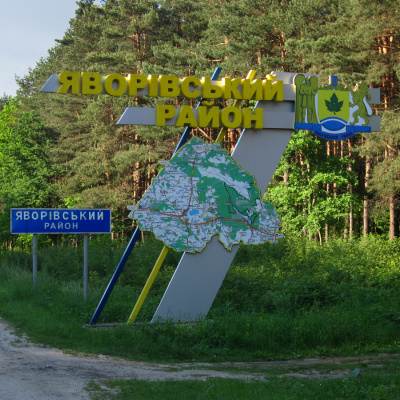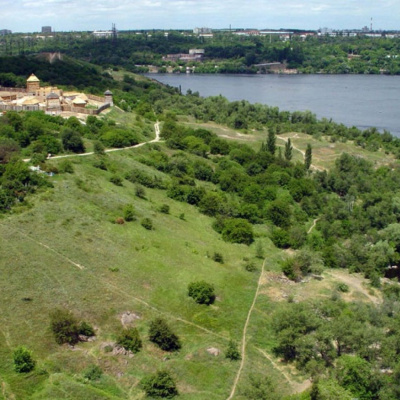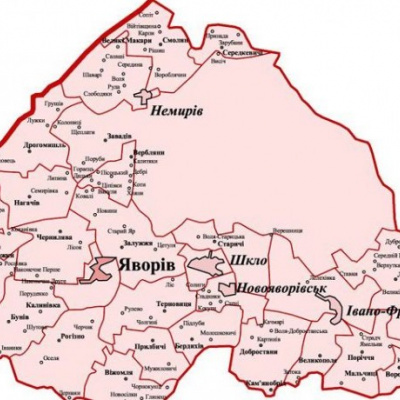Yavoriv district
Yavoriv district is located at the intersection of ancient trade routes between the countries of Western and Eastern Europe, Scandinavia and Arabia. Modern international highways have inherited the historical directions of roads and now pass through our region, connecting European countries. The trans-European highway Lisbon-Kyiv, passing through the towns of Krakivets, Yavoriv, Novoyavorivsk, and Ivano-Frankivsk, connects the Polish city of Yaroslavl with Lviv.
Krakivets is home to the largest customs office on the western border of Ukraine, Krakivets-Korchova. Territorial highways connect Yavoriv district with neighboring districts. There is also a railroad that provides freight transportation from Lviv to Yavoriv and passenger transportation from Lviv to Starychi. The district has a well-developed network of paved roads connecting villages with the district center and Lviv. Yavoriv district has well-established economic ties with neighboring districts, the regional center and Poland.
Our region is located on the border of the Carpathian, Polissia, and Podillia natural areas, in the basins of the Black and Baltic Seas. Most of the district belongs to the main European watershed - Roztochia, which led to the location of Yavoriv region in the basins of the tributaries of the Syan and Dniester. The surface of the Yavoriv land is an elevated undulating plain with infertile soils, covered with massive tracts of mixed forests alternating with fragrant meadows and agricultural land.
Economically, Yavoriv district is characterized as an industrial and agricultural area, with its main wealth being deposits of industrial sulfur, raw materials for the construction industry, natural gas, oil, forests and reservoirs, and recreational resources.
In general, Yavoriv district can be characterized as having a favorable geographical location and being a kind of sycamore gateway on the western border of Ukraine.
- The Roztochya Nature Reserve is a nature reserve established in 1984 to preserve and scientifically study the unique landscapes of the Ukrainian Roztochya. It covers an area of 2,084.5 hectares;
- Yavoriv National Nature Park - a park established to preserve, restore and rationally use typical and unique forest-steppe landscapes and other natural complexes within the Main European Watershed;
- dendrological park - Stradch arboretum and cave in Stradch;
- Yavoriv Lake;
- Cholhynskyi and Yanivski Herons ornithological reserves and Zavadivskyi forest reserve;
- Nemyriv nature reserve.
Roztochia has long been a major recreation area for residents of Lviv and its environs. The recreation areas at their disposal include Vereshchytsia, Lelekhivka, Serednyi Horb, Kozulka, and Roztochia House. Four bus and pedestrian routes have been developed in the park, which showcase valuable historical, cultural and sacred sites: "Stradch - Black Lakes", "Roztochia Paths from Yaniv to Krekhiv", "Yavoriv Military Training Ground: Past and Present", "Yavoriv Neighborhoods", and "Centuries of Yaniv History".
Ecotourism is being developed on the basis of Roztochia and Yavorivskyi NNP, the main forms of which are cognitive, natural and cultural, skilled (skiing, caving, biking), and hiking. Roztochia is a nature museum and an open balneological nature reserve. It is rich in medicinal bogs and mineral waters such as Naftusia, some of which are unique not only in Ukraine but also in Europe.
The Shklo and Nemyriv resorts with their famous sulfur springs are the oldest in Ukraine. Medical services are provided by the Badorist boarding house, located in a picturesque corner of a coniferous forest near the village of Shklo.
The centers of spiritual culture are the vacation spots of Stradch, Hlynytsi, Lisk Chernyliavskyi, and Kernychka, to which tourist routes have been laid.
Stradch is known for four features that make it rightly considered a pilgrimage area. These are the Stradets Monastery and the miraculous icon of Our Lady of Stradets of the Indestructible Wall (only a copy has survived), the burial place of two blessed saints, Fr. Dr. Mykola Konrad and Deacon Volodymyr Pryima (they were declared blessed by the Holy Father John Paul II, Pope during his visit to Lviv in 2001), and the Stradets Way of the Cross. Today, Stradch is a place where the soul finds solace and peace, where miracles of physical and spiritual healing take place.
The real value of the Church of the Laying of the Belt of the Virgin Mary in Chernyliavskyi Lisk is the icon of the Mother of God of Lisk, which was famous for healings and was recognized by the people as miraculous. In 1849, this holy place received the right of full pilgrimage from the Pope. The spring of St. Onufriy in the Studenets tract is famous for its healing water.
It is worth visiting the church-museum of UGCC Metropolitan Andrey Sheptytsky in Prylbychy, the Sheptytsky family village. Every year on July 29, celebrations are held here with the participation of numerous guests from abroad to honor the Metropolitan's name. The Sheptytsky family tomb has been preserved in the local cemetery.
Examples of ancient sacred architecture are the wooden churches in the Yavoriv region, where iconostases made with Yavoriv carvings, embroidered icons, banners, and ancient iconography have been preserved. Ancient churches and bell towers preserved in the villages of Muzhylovychi, Prylbychi, Starychi, Vizhomlia, Starychi, Kohanivka, Lyubini, Drohomyshl, Kamianobrid, Lis, Seredkevychi are architectural monuments of local importance.
The ancient historical towns of Yavoriv, Nemyriv, Krakovets, and Ivano-Frankivsk are interesting sightseeing destinations with a rich history.
- Church of the Resurrection of 1560 in the village of Vizhomlia
- Church of St. Paraskeva with a bell tower (state) 1676 Buniv village
- Church of St. Yurii (der.) 1715 Vilshanytsia village (now in Novoyavorivsk)
- The Church of the Cathedral of the Blessed Virgin Mary with a bell tower (der.) 1781 Velykopole village
- Church of the Transfiguration (der.) 1662 Voroblyachyn village
- St. Michael's Church with a bell tower (der.) 1715 Hrushev village
- Church of the Holy Trinity (c.17th c.) with a bell tower (19th c.) Ivan Franko village
- Church of the Assumption (c.1739) Lelekhivka village
- St. Michael's Church (der.) 1600 Muzhylovychi village
- Church of St. Paraskeva (state) 1516, 1640, 1748 Novyi Yar village
- Church of the Cathedral of the Blessed Virgin Mary (state) Prylbychi village
- The Church of St. John the Evangelist (der.) 1718 with a bell tower (1818) village Semyrivka village
- Church of St. Paraskeva (der.) 1638 Staryi Yar village
- Church of St. Nicholas (der.) 1745 Cetulia village
- Count's estate Vysich village
- Globe of Ukraine Yavoriv
- Jan Sobieski's hunting lodge Yavoriv
- Church of the Intercession village Dubrovytsia
- The Church of the Cathedral of the Blessed Virgin Mary village Domazhyr
Yavoriv district is famous for the legendary names of prominent figures who were born or lived in Yavoriv district. In the town of Yavoriv, monuments to A. Sheptytsky, M. Verbytsky, and O. Makoviy, in the village of Ivaniki - to Y. Lypa, in Krakivtsi - to R. Shukhevych, and in Kamianobrod - to P. Andrusiv.
In order to preserve historical memory, a museum-estate of O. Makovey was created in Yavoriv, school museums of Y. Lypa in Buniv, R. Shukhevych in Krakivtsi, P. Andrusiv in Kamianobrod, and the church-museum of A. Sheptytsky in Prylbychi.
Yavoriv district was at the forefront of the national struggle of Ukrainians. In Buniv, the most active center of the UPA's fighting, the remains of hideouts have been preserved. The doctor Y. Lypa worked here. An insurgent hideout in the village of Volia Lubinska has been restored and is open to the public. In the town of Yavoriv and the village of Buniv. Yavoriv and the village of Buniv have memorial burials of UPA soldiers.
One of the priorities of the regional environmental policy is the development of a recreation area on the coastal strip of Yavoriv Lake, where five recreation areas are planned: Forest, Okilky, Zaluzhzhia, Cetula, and Vilshanytsia.



